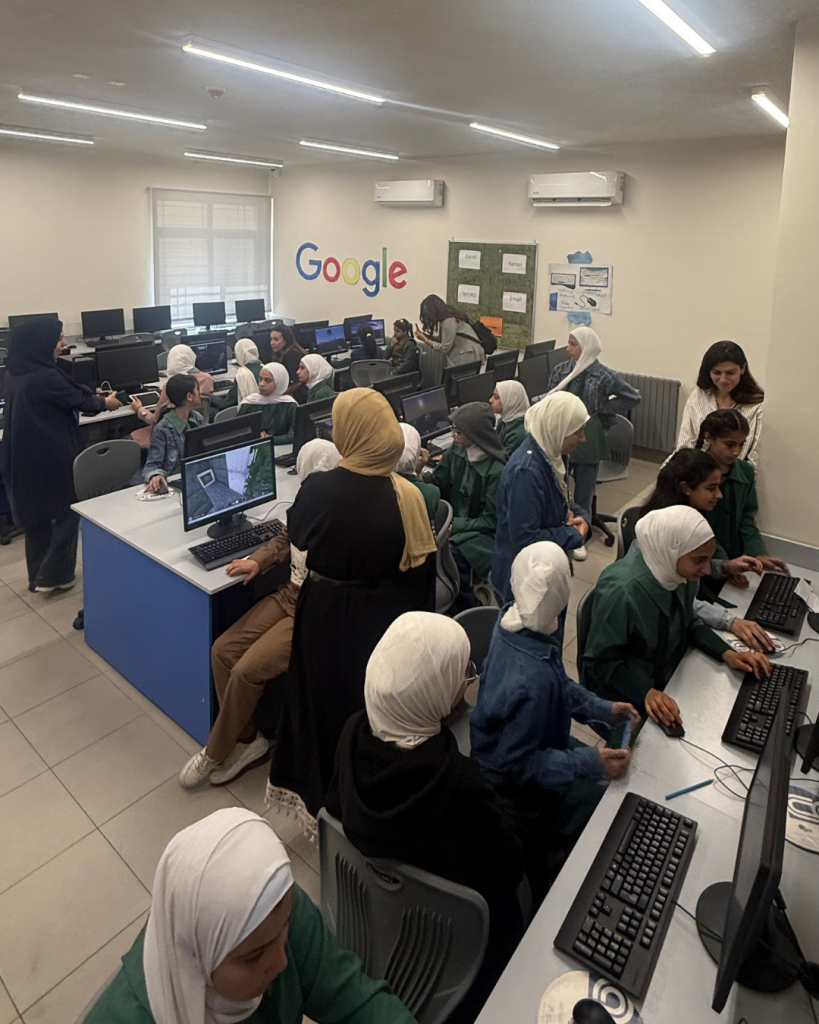Picture a classroom in Amman. You walk in expecting the usual sights of technical training: rows of silent students, dry lectures on syntax, and the scratching of pens on paper.
Instead, you find a room buzzing with energy. Young people are glued to their screens, debating logic, testing systems, and cheering when something clicks. They aren’t suffering through a computer science textbook. They’re playing Minecraft.
But look closer. They aren’t just punching trees or fighting zombies. They are building complex logic gates using Redstone circuits. They are automating virtual farms using loops and variables. Without even realizing it, they are mastering the fundamentals of coding that usually scare students away.
This isn’t just a game. It is a quiet revolution in how Jordan prepares its youth for the digital economy.
The Education Crisis We All Know
Let’s be honest about the state of traditional tech education. It’s often… boring.
Across the Middle East, governments pour millions into training programs to close the “skills gap.” Yet, we keep seeing the same pattern: bright students sitting in classrooms, trying to memorize abstract coding concepts. They learn for the exam, pass the test, and forget it all a week later. There is no spark. There is no connection to the real world.
The result? High youth unemployment and a tech industry desperate for talent, with a massive disconnect in the middle. The problem isn’t that young people can’t learn technology; it’s that the way we teach it feels like a chore, not a career.
The Gaming Revolution
Enter the Youth Technology and Jobs project—a collaboration bringing together Jordan’s Ministry of Digital Economy and Entrepreneurship, the Ministry of Education, and private sector innovators like our studio” Maysalward” as official Minecraft Education Partners.
We chose to make a bold bet: what if we stopped treating technology as merely another school subject and instead treated it as a medium for students to explore, create, and experiment? Rather than building students’ capacity directly, we focused on empowering teachers to sustain and expand this approach with their students and schools.
Using Minecraft Education Edition, they have disguised rigorous technical training as creative play.
- The Logic: To build a functional elevator in the game, a student has to understand conditional logic (if this, then that).
- The Systems: To manage resources, they have to think algorithmically.
- The Teamwork: To build a massive city, they have to collaborate, communicate, and manage a project—skills that are arguably more valuable in the workplace than knowing Python syntax.
Why It Actually Works
This approach works because it reflects how the human brain actually learns. We learn best when we’re emotionally invested and when making mistakes is safe.
In a traditional classroom, a wrong answer can be embarrassing and lead to a poor grade. In Minecraft, if your automated door doesn’t open, it’s just a glitch. You fix it, try again, and iterate. That’s exactly how professional software engineers operate.
Students aren’t only learning code; they’re learning to think like technologists. They’re building resilience and discovering that a problem is simply a puzzle waiting to be solved.
Teachers aren’t isolated from students’ interests; they’re closely connected and speak the same gaming language—the language of Minecraft building blocks.
Transformation Stories
The real metric of success here isn’t test scores; it’s confidence.
There are students in this project who previously believed they were “bad at math” or “not smart enough” for tech. Now, those same students are designing automated systems and debugging complex logic.
When a student realizes they can master a system they thought was impossible, their self-image changes. They stop seeing themselves as passive consumers of technology and start seeing themselves as creators. That shift in mindset is worth more than any certification.
Jordan’s Role as a Pioneer

Students and their teachers are collaborating with Minecraft Education in a school in Jordan.
Jordan is positioning itself as a hub for innovation in the MENA region. By embracing gaming-based learning, the Kingdom is proving that education doesn’t have to be rigid to be effective.
This initiative is a blueprint for the rest of the region. It shows that bridging the digital divide requires more than just hardware and internet access; it requires a fundamental rethink of how we teach.
The Future is Play
The digital economy waits for no one. The future belongs to those who can adapt, solve novel problems, and work in teams.
What is happening in these Jordanian classrooms is proof that the most powerful tool for serious economic development might be “child’s play.” By meeting young people where they are—in the digital worlds they love—Jordan isn’t just training workers; it is inspiring the next generation of tech leaders.
And they are doing it one block at a time.
